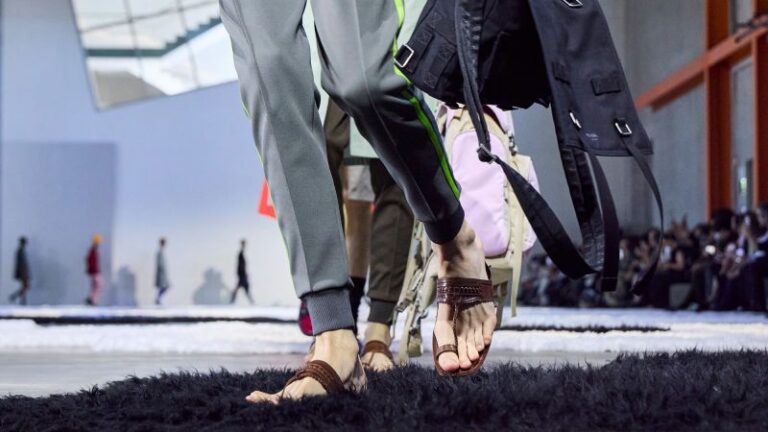Understanding Cultural Appropriation in Fashion: The Kolhapuri Chappal Debate
Last month in Milan, Prada showcased brown sandals featuring distinctive toe rings and intricate stitching, igniting discussions linking them to a centuries-old Indian tradition. These sandals bore a striking resemblance to Kolhapuri chappals, traditional hand-crafted footwear from India that dates back to the 12th or 13th century.
The Resurgence of Kolhapuri Chappals
The esteemed Italian fashion house framed the shoes as a luxurious innovation. However, many in India quickly recognized them as Kolhapuri chappals, raising concerns over cultural appropriation. Prada’s lack of initial acknowledgment of the sandals’ origins drew criticism, with netizens highlighting the erasure of India’s artisanal heritage.
Fashion’s Cultural Sensitivity
After significant backlash, Prada responded by admitting that their men’s Spring-Summer 2026 collection was “inspired by traditional Indian footwear.” The brand later expressed its admiration for craftsmanship and design, while also mentioning discussions with Indian artisans for future collaborations.
India’s Luxury Market Growth
This incident reflects a broader trend, as the Indian luxury market is projected to grow from $7.73 billion in 2023 to $11.3 billion by 2028, outpacing many global benchmarks. Factors such as urbanization, a burgeoning middle class, and a new generation of consumers are at the forefront of this market transformation.
A Diverse Audience of Indian Luxury Consumers
Today’s Indian luxury consumers represent a diverse demographic, shifting away from a singular archetype. Gaurav Gupta, a prominent fashion designer, elaborates that this audience seeks deeper connections beyond mere brand names, desiring a richer engagement with the emotional and cultural narratives of fashion.
The Importance of Cultural Dialogue
Luxury brands have begun to invest more intentionally in India, but Gupta notes that genuine cultural dialogue is often overshadowed by commercial interests. An authentic connection is vital, where brands not only enter the market but do so with respect for local traditions and artisans.
Addressing Cultural Appropriation
Recent years have seen heightened scrutiny over cultural appropriation, particularly from Indian artisans and designers who desire acknowledgment for their designs and heritage. Incidents involving brands like Gucci and Reformation illustrate a growing awareness and activism among those promoting Indian cultural roots.
Conclusion: Redefining Fashion Narratives
As conversations surrounding cultural appropriation intensify, the fashion industry must navigate this landscape with sensitivity and respect. Kolhapuri chappals symbolize a crucial intersection of heritage and modern fashion that should inspire appreciation rather than appropriation. With changing dynamics, Indian designers are reclaiming the narrative and showcasing their artistry on global platforms, paving the way for more equitable engagements.
